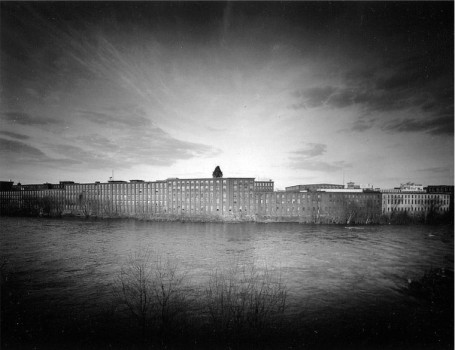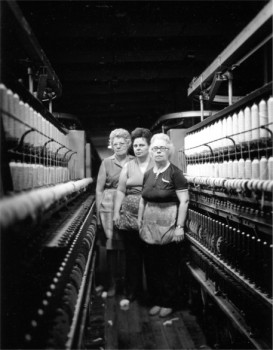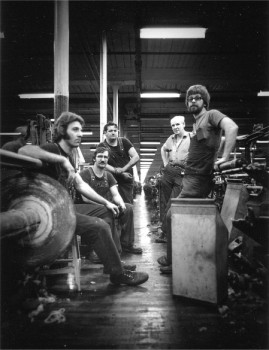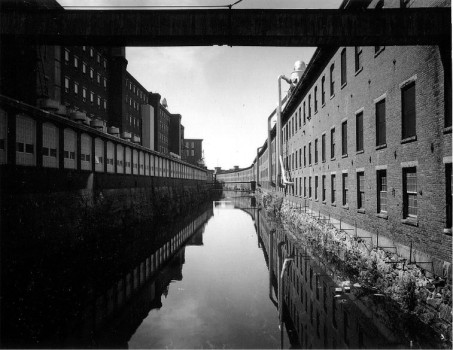
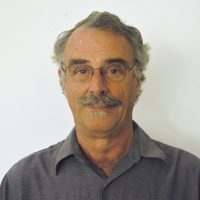
Randolph Langenbach first became known as a documentary photographer and writer because of his work documenting the textile mill towns of New England and landscapes of the Industrial Revolution in Great Britain. His groundbreaking work on the Amoskeag Mills in Manchester N.H. resulted in a series of exhibitions and the book, Amoskeag, Life and Work in an American Factory City, co-authored with Tamara Hareven, published in 1978 and still in print. Later, his exhibition in England at the Royal Institute of British Architects, and the companion book Satanic Mills, published by SAVE Britain’s Heritage, contributed to changes in British government policy away from systematic demolition of historic 19th Century textile mills. His work on this subject also extended to India, where he documented the factories still running with late 19th and early 20th century labor-intensive technology under an Indo-American Exchange Fellowship in 1981. Almost all of the factories he documented then have since closed.
From 1984 to 1991, he was Assistant Professor of Architecture at the University of California, Berkeley where he began his research project to investigate the seismic vulnerability and methodologies for the strengthening of historic masonry buildings. From 1992 until 2004 he was a Senior Analyst at the Federal Emergency Management Agency (FEMA). Over the course of the past twenty years, Langenbach has undertaken research on traditional construction in earthquake areas, a project that has included many sites in Europe, Asia and Central America. He has also served as a consultant on this subject to UNESCO in Turkey, Georgia, India and Pakistan; to the World Monuments Fund in Bam, Iran, and Haiti, and to the Turquoise Mountain Foundation in Kabul, Afghanistan. Over the past year he has been invited keynote speaker at six conferences in five countries on three continents.
In 2002, he was awarded the National Endowment for the Arts Rome Prize Fellowship in Historic Preservation at the American Academy in Rome for his international research and writing on traditional construction in earthquake areas, and it was during this fellowship that he created and produced the Piranesi Project: A Stratigraphy of Views of Rome. His work can be found on the web at www.conservationtech.com and www.traditional-is-modern.net.
Website
http://www.conservationtech.com
